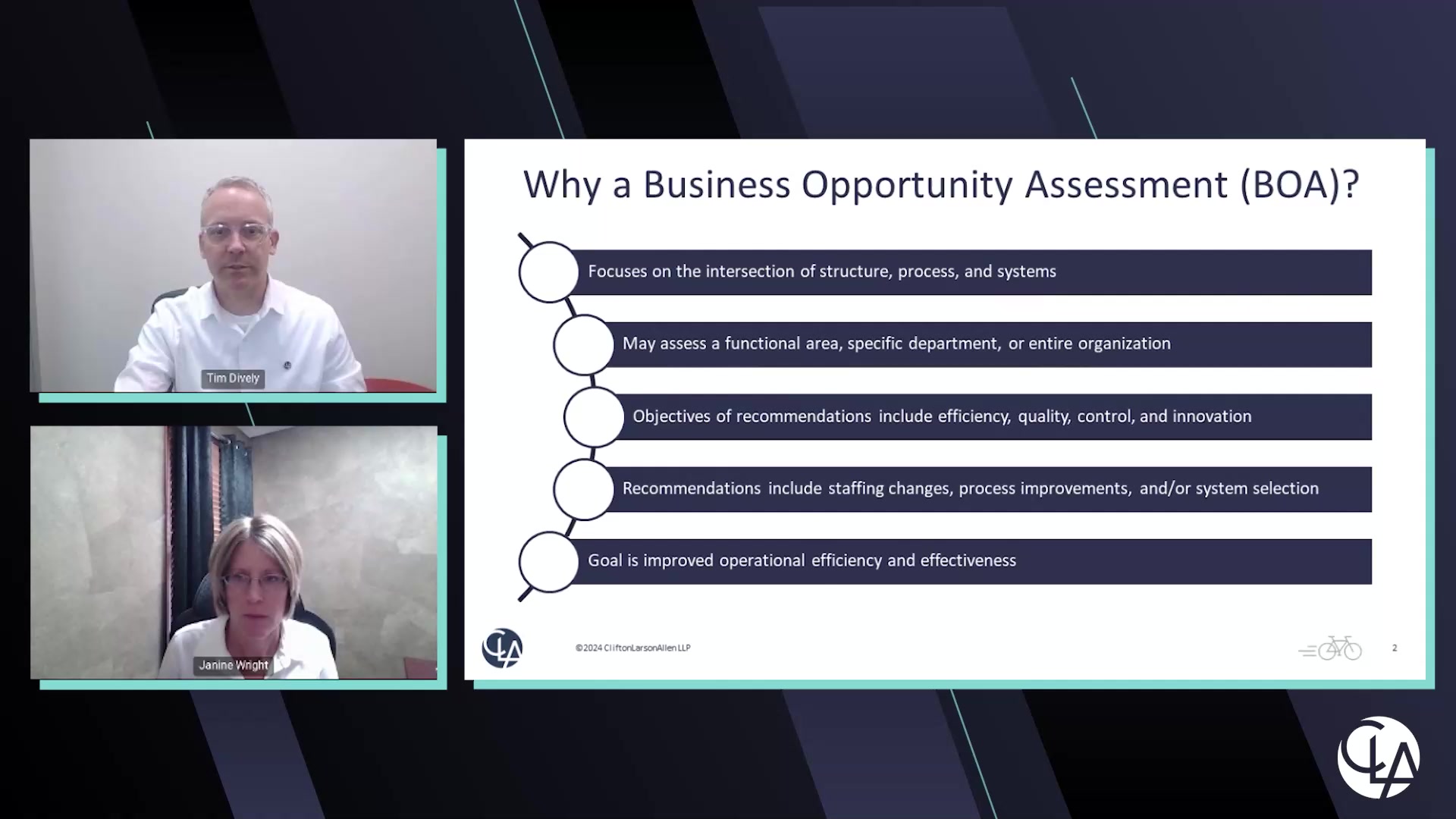Improving Financial Institutions Through Business Opportunity Assessments
Business Opportunity Assessments may help financial institutions improve efficiency, performance, and customer experience amid budget constraints.
Timeline for Institutional System Reviews and Replacements
Starting system review processes early may help maintain leverage and support smooth transitions.
Enhance Operational Efficiency for Existing Systems
A system optimization evaluation may identify gaps and improvement areas to enhance efficiency without overhauling your entire tech stack.
Bridging Workflow Gaps: From Current State to Future Efficiency
A gap analysis may streamline workflows by identifying strengths and weaknesses, setting functional requirements, and implementing a strategic roadmap.
Case Study: Revamping Loan Processes
An institution improved operational efficiency by enhancing loan processes, implementing automated workflows, and enhancing system integrations.
Gain Efficiency and Security Through Technology Integration
Enhancing existing technology with integration may provide cost savings, reduce downtime, and boost productivity for institutions.
Strategic System Selection: Aligning Technology with Institutional Goals
Choosing a system often requires strategic alignment with long-term goals and avoiding rushed decisions.
Vendor Reliability: Key Due Diligence Practices
Understand vendor technology and risks and conduct thorough due diligence with comprehensive documentation.
Complexities in Digital Strategy Development
Plan strategically for system upgrades, monitor SLAs, and avoid costly auto-renewals for effective digital strategies.
The Crucial Role of Trusted Advisors in Contract Management
Engaging a trusted advisor may help institutions avoid costly contract pitfalls and achieve competitive pricing terms.
Strategic Considerations for Institutional Pricing
Evaluate pricing methods, contract clauses, and potential fees to effectively align with financial strategies.
Effective Vendor Performance Monitoring: Key Practices and Responsibilities
Learn essential strategies for ongoing monitoring of third-party vendors, emphasizing SLA performance, financial stability, and accountability.
A Guide to Implementation Advisory Services
Implementation advisory involves executing business recommendations, system optimization, and facilitating smooth transitions with thorough planning, training, and data management.
Data Quality: Identifying Root Causes and Implementing Controls
Focus on data quality by identifying root causes or errors and implementing controls to help prevent future issues.
Full video

Boosting Financial Institution Efficiency From Assessment to Implementation

